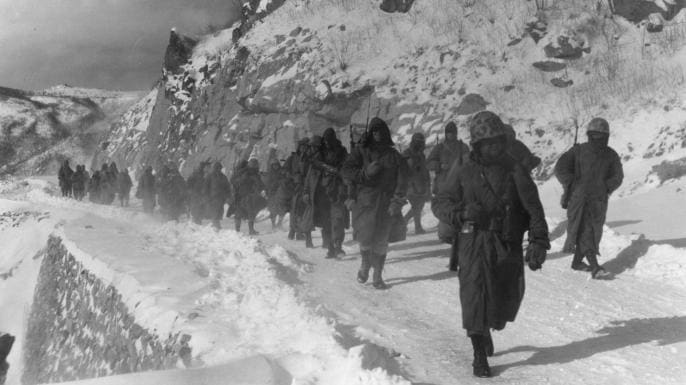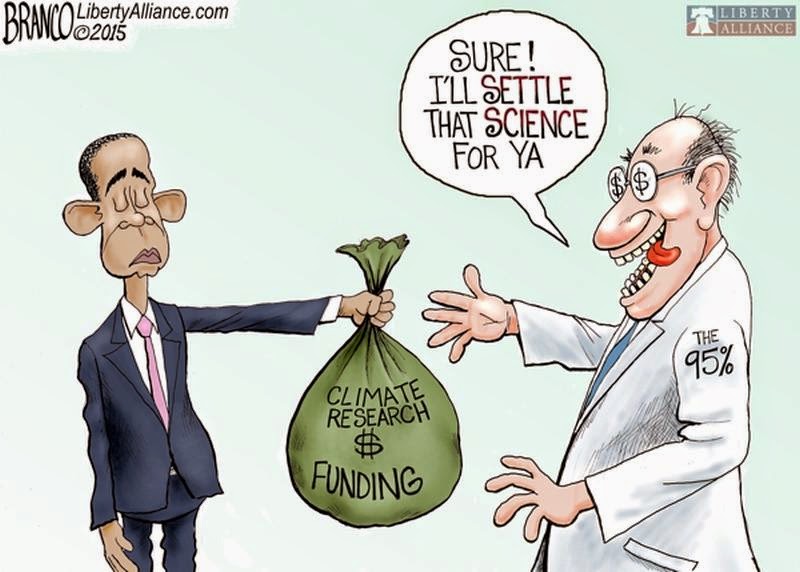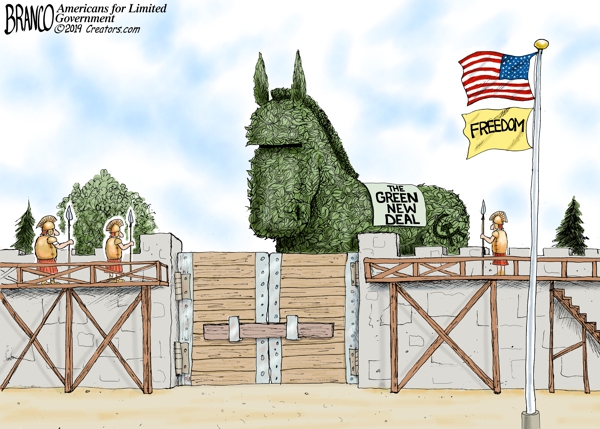My buddy Al (of Al’s Coffee Shop) was muttering to himself and rattling the dishes as I entered his shop last week. “What’s going on, Al?” I asked, as I sat down and ordered my customary triple-caffeine, mocha-bomb selection.
“Just more dumb stuff from the Greenies,” said Al. “Is anyone in college learning anything?”
Al tossed a college newspaper on the counter. I saw that it was from a small college in western New York that Al and I are acquainted with. On the front page, above the fold, the lead article proclaimed that the college is “going green.” For starters, it meant that napkins and paper-ware in its cafeteria and coffee shop would henceforth be made from “recycled” paper instead of from paper manufactured from trees. Theoretically, this saves many trees from destruction.
“That’s not a bad thing,” I pointed out to Al. “Who could possibly object?”
On reflection, though, call me old-fashioned but I like to see details. What about the school’s “green” campaign? Is there a tree-crisis? Are we really in danger of using them up? Everything I read in myriad articles on the subject tells me there is no such threat. Large tracts of land used a century ago for crops or for grazing have now reverted to forest cover.

Exact statistics on how much land is forested now, versus 1900, 1800, etc., are hard to find. I saw a report that said North America has 90% as much forest-cover as it did when Columbus landed. (Well, no wonder they’re knocking down his statues.) I suspect that data are scarce because they serve no useful financial purpose (as in federal funding). If forestation levels had fallen radically since 1900, one assumes the data would be loudly trumpeted. We hear, “the trees, oh the trees…” but no data. This should tell us something. If there’s really a problem, there should be data.
So if there isn’t truly a problem with trees, exactly what are we trying to do with all the napkins, paper plates, and the whole environmental thing? Well, of course, we’re trying to stop climate-change. (“Warming” is no longer the alarm du jour because the climate hasn’t really warmed since 1998.) We want to prevent climate-change because, presumably, we like the climate the way it is and don’t want any change.
But isn’t change embraced as “good” in almost every other venue? – e.g., societal, cultural, religious, educational, political, sexual, etc. Why is climate-change so bad that we have to make radical changes in our lifestyles to keep it from happening? And why are lifestyle-changes OK, while change in the climate is not OK?
These questions are not easy to answer – mainly because the positions they represent don’t make much sense. To begin with, it’s not at all clear that climate-change is bad. Climate variations have occurred several times, during (or close to) my own lifetime, without the world ending. Scientists say 1870-1940 was a warm era. Temperatures rose enough to noticeably exceed levels that characterized the long, cold era called “The Little Ice Age” (ca. 1450-1870). The 1870-1940 warm era occurred before the world was fully industrialized. So its cause is unclear, since carbon dioxide levels were not being driven up by industrial and automotive emissions.
Around the time when World War II got going (1940), with its heavy industrial development and weapons use, the climate began to cool. The Battle of the Bulge (1944-’45) occurred during Europe’s coldest winter in 50 years. It was also desperately cold during the U. S. Army’s 1950 retreat at Chosin Reservoir, Korea.

We had some very heavy snows and cold winters during my childhood and adulthood (1958, 1966, 1979). The winter of 1979-’80 saw temperatures of -15° (F) at our home in Maryland. And young fools were driving cars across the ice on the Potomac River, near Washington, DC. By the end of the 1970s, reporters were predicting a “new ice age.” We were all going to freeze.
During 1940-‘80, industrial development boomed. Carbon dioxide poured into the atmosphere, year by year. Yet temperatures kept declining. No one wondered about this at the time because scientists, reporters and politicians were not yet turned on to climate-change and the good money to be made by studying it. (There were no suggestions that we burn more coal or drive more miles to “warm” the climate.)
Then, the climate started warming again. No one knew why. But political opportunists like Al Gore jumped on carbon dioxide and other “greenhouse gases,” saying industrial and automotive emissions were causing the warming. Sensing new markets for green products and technologies, businesses joined the big-money parade.
Government started letting contracts to “study” climate-change and possibly stop it. Federal funding for climate-change research, technology, international assistance, and adaptation went from $2.4 billion in 1993 to $44.9 billion today. The mainstream media have also been in full cry, publishing articles, books and reports that predict environmental doom if we don’t make wholesale changes (there’s that word again) in our lives and culture.
Al Gore has made a nice living with his Inconvenient Truth film and road show, preaching the Gospel of Green – conservation, radical lifestyle changes, high taxes – and scaring folks who need cars for their work and need air conditioning to let them live in places like Tennessee. Climate Al lives there in a 20,000 square-foot house whose utility bills are 10 times yours and mine. He flies all over the world in a private jet, but says the icecaps will melt, New York City will be under water (would that really be bad?), and the polar bears will all die if we don’t stop driving SUVs (or any gas-burning cars). Al’s new film, An Inconvenient Sequel, flopped though. His prophet-cred is kaput because people know that none of his dire predictions came true.
Radical environmentalists envision a purified planet, with 300 million people living in pristine simplicity – hunting, gathering, protecting the earth, freezing their butts off in grass huts with dirt floors, and cooking over fires of dried buffalo-poop. We have 7.5 billion people now. What happens to the other 7.2 billion in the greenies’ non-industrial earth plan? Friends in upstate New York said their town paid for some Oregon children to visit and talk to them about the charm of primitive life in Africa. (A pleasure that their own parents have, regrettably, not yet embraced.)

But Canadian Dr. Timothy Ball and American Dr. Fred Singer – both respected climate scientists – are part of a growing cadre of scientists today, who note that while warming did occur from 1980-’98, temperatures have remained essentially flat since 1998. Whatever the advantages or disadvantages of climate-change might be, current conditions are unclear. Carbon dioxide emissions keep growing, and many scientists now point to the sun as the true determiner of climate. Yet the “green express” roars onward – seemingly unstoppable. Why is this?
The short answer is “money.” It’s about dollars, not data. If Mel Brooks made a film about the climate-change movement, some character would snarl, “Data? We don’t need no steenking data!” Despite a lack of conclusive data, and a vigorous debate within the scientific community about the cause of climate-change – or whether it is even happening – the movement’s movers and shakers believe they have convinced the public that a climate “emergency” is upon us. They think we can be had for gazillions in new taxes, “green” products, electric cars (or no cars at all) to stop climate-change – or, at least, to make us think we’re stopping it.

Technical companies are feverishly preparing new “green” commodities. It is a glorious new opportunity for many industries – reminiscent of the chloro-fluorocarbon scare of the 1980s, when we spent billions on new air conditioners and refrigerators to no real purpose. (Scientists now say CFCs do not damage the ozone layer.)
One of the industries poised to make a bundle is insurance. In a Washington Post article, “The Climate-change Peril That Insurers See,” John Morrison (state auditor of Montana) and Alex Sink (CFO of Florida) reported that property insurers now “believe” – is that a branch of science? – that greenhouse gas emissions are warming the climate and causing extreme weather, including hurricanes and wildfires. The authors noted: “Seven of the 10 most expensive catastrophes for the U. S. property and casualty industry happened between 2001 and 2005.” They fully concur with the policy statement of major U. S. insurer AIG, recognizing “…the scientific consensus that climate-change is a reality and is likely in large part the result of human activities that have led to increasing concentrations of greenhouse gases in the earth’s atmosphere.”
Insurers have seized on a media-hyped hysteria to cite a threat to “insurance as we know it” – based on a supposed linkage between greenhouse-gas emissions, climate-change, and extreme weather. No mention is made of more Americans living in harm’s way. The industry’s major focus is on climate-change/warming. Insurers are calling on government to stop the change by cutting carbon emissions 60-80% by mid-century – or else.
Or else what? Obviously, or else insurers will raise rates precipitously, as they did after hurricane “predictors” – a claque of unaccountable university climate-geeks – predicted 17 named storms, 9 hurricanes, and 5 major hurricanes for 2006. The predictions included an 81% chance that a major hurricane would hit the United States. The insurance industry made big bucks on those high premiums when no hurricanes hit during 2006 – a first in recorded history. Media forecasters – clad in fashionable wind-breakers – who had hoped for another Katrina-like disaster were visibly disappointed as one storm after another fizzled in the Atlantic.
But insurers were popping champagne corks. Shares in a Swiss reinsurance company (in whose bonds I was invested) zoomed from $25 to $110 per share. The National Oceanic and Atmospheric Administration (NOAA) predicted 13-17 named storms, 7-10 hurricanes, and 3-5 major hurricanes in an “above normal” 2007 season. But no Category 3+ hurricanes hit the U. S. coast in 2007, or in any other year until 2017. “Super-storm Sandy” made political news in 2008, but it was less than Category 3.
Climate experts declare that warming does not cause “extreme weather,” and that we are not in an era of more intense storms. It only seems that way because of 24/7 news-coverage and overbuilding in hurricane-prone coastal zones.
Ice-cap melting seems like a new “warming” problem because we see it happening via satellite. But it happens every spring and summer, as it has for eons.
The insurance “holdup” is, I predict, only the first expensive result of the climate-change mania. An entire financial industry is basing higher premiums on a postulated risk tied to an unproven climate theory. But no one is calling them on it! When traders bid oil futures up on similar suppositions, politicians jump all over the industry, charging price gouging. Where is the outcry about insurers doing the same thing?
Perhaps politicians are quiet about this because they hope to roll us in the same way: i.e., that we must all pay higher taxes to stop destructive climate-change. Americans are teetering on the edge of the greatest government/financial/scientific swindle in history: new taxes, higher prices, destruction of personal transportation options, poverty, and degraded living – not because of actual events, but in anticipation of events whose occurrence is only a theory. It is a politicians’ and businessmen’s dream. If we buy this, we’ll buy anything. And, as Barack Obama sagely observed, we obviously have waaay too much money.
“A fool and his money are soon parted.” (Thomas Tusser, 1557)
“Who’s paying for all this?” (W. C. Fields, 1928)


